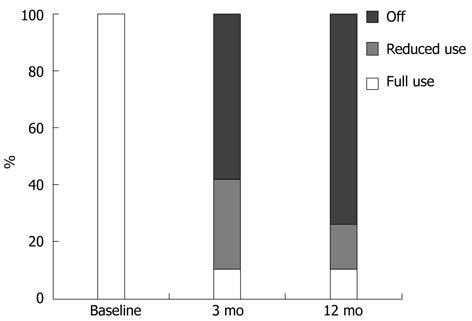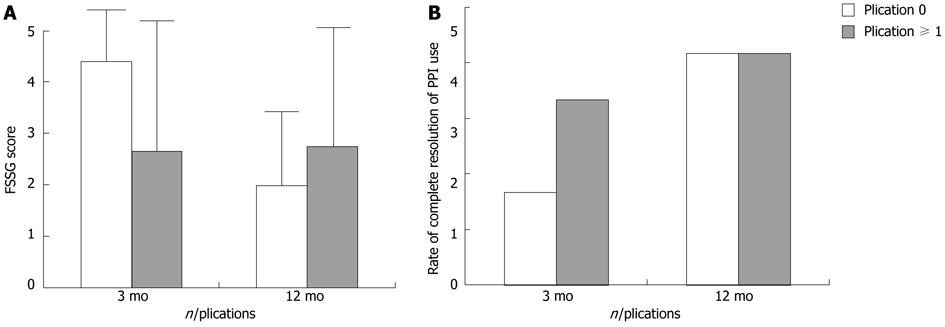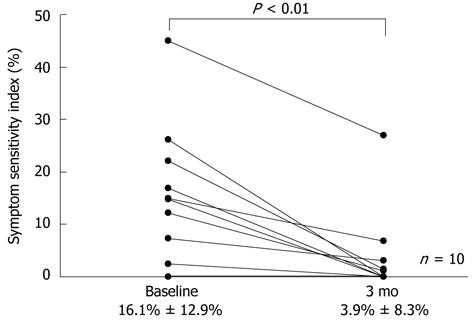Copyright
©2012 Baishideng Publishing Group Co.
World J Gastroenterol. Nov 7, 2012; 18(41): 5940-5947
Published online Nov 7, 2012. doi: 10.3748/wjg.v18.i41.5940
Published online Nov 7, 2012. doi: 10.3748/wjg.v18.i41.5940
Figure 1 Rate of discontinuation or reduction by more than 50% of proton pump inhibitor use.
Figure 2 Relationship with the plication number and symptom or proton pump inhibitor use.
A: Relationship between the number of plications and the score of the frequency scale for symptoms of gastro-esophageal reflux disease. There is no significant difference between the two groups (remaining pliccations 0 vs one or more) after 3 or 12 mo after endoluminal gastroplication (ELGP); B: Relationship between the number of plications and the rate of proton pump inhibitor (PPI) use. The group with one or more remaining plications shows a tendency to reduced PPI use 3 mo after ELGP (P = 0.07). However, there is no significant difference between the groups after 12 mo of ELGP.
Figure 3 Symptom sensitivity index transition at baseline and 3 mo after endoluminal gastroplication.
- Citation: Tokudome K, Funaki Y, Sasaki M, Izawa S, Tamura Y, Iida A, Ogasawara N, Konagaya T, Tokura Y, Kasugai K. Efficacy of endoluminal gastroplication in Japanese patients with proton pump inhibitor-resistant, non-erosive esophagitis. World J Gastroenterol 2012; 18(41): 5940-5947
- URL: https://www.wjgnet.com/1007-9327/full/v18/i41/5940.htm
- DOI: https://dx.doi.org/10.3748/wjg.v18.i41.5940















